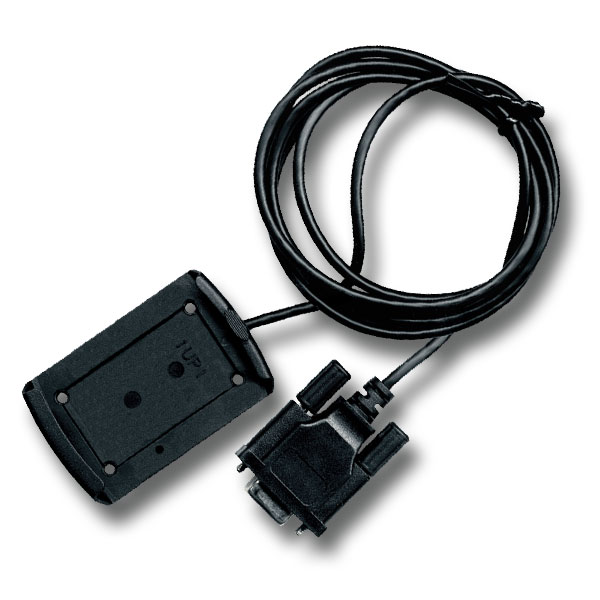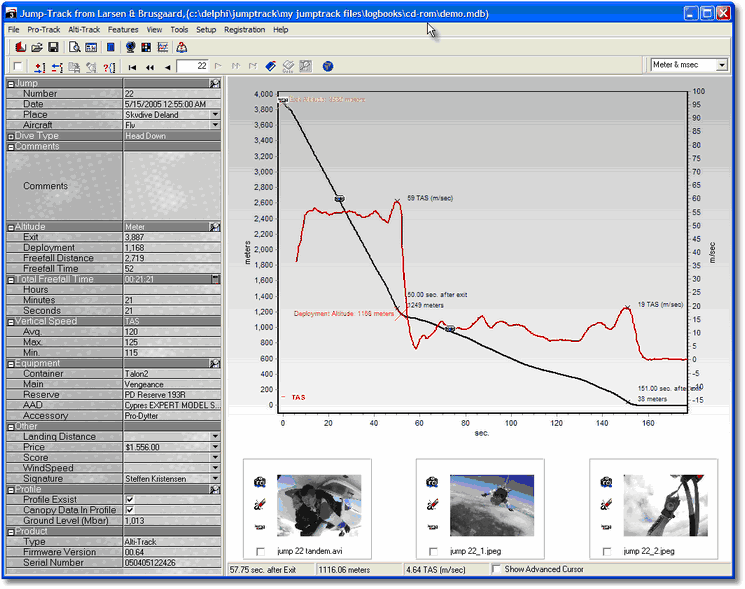With the release of the new ProTrack 2 we have a look at exactly how many more things it offers.

ProTrack II Design
When falling through the sky it is not only a jolly good idea to have a little gizmo the beeps in your ear to remind you to do stuff - in many situations it is mandatory. For some people the simplest set of warnings are sufficient - one distinct electronic chirrup for each of break-off and deployment, then an angry screechy one for being lower than is safely acceptable/possibly getting told off about what you just did. However, even the most rudimentary electronic devices now come packaged with a tiny computers buried inside that have enough computational power to perform orbital mechanics and help serve the purpose of pacifying your life’s need to do anything much other than binge watch old episodes of Deep Space Nine on Netflix.
 Original ProTrack Design
Original ProTrack DesignI bought an original ProTrack as my first set of beeps back in 2007 as I am a big nerd and it was the most fanciest audible altimeter available. I remember being tremendously excited about how it allowed me to download the accumulated digital data from my skydives and then produce graphs from the correlated information to share on my MySpace page - thus proving beyond all doubt I was both cooler and smarter than the people who laughed at me in school for my ongoing interest in toy soldiers.

Technology moves fast and our insatiable appetite for mobile phones that do more and more has led to some mind-boggling miniaturisation in our daily lives. We are now very used to tiny electronic doodads with little screens that do many things. So - we some beeps to remind us of a few important things in freefall, but how much more is it possible or necessary to do with an audible altimeter if we apply the technology we have available now?
With this update of the ProTrack, what Larsen and Brusgaard have done is smoosh together the features of the original device with those of their flagship audible altimeter - the Quattro - then sprinkle it with some modern goodness that we recognise from things we see every day in phones and such.
If we break it down the ProTrack 2 can be divided into categories as follows:
Things ProTrack Did Already:
Mass Storage: It records the details of your jumps. Including accumulated freefall time, which is nice - especially if you find adding up units of time a pain in the ass.
Connectivity: There is much to be said for a digital record of you achievements. A meticulously crafted pen and ink logbook is beautiful artefact of your skydiving career (and still a requirement for advancement in many places), but equally splendid in a different way is a lovingly curated online adventure zone that enjoys all the fruits of modern computing.
Exit/Deployment Altitude: With time one learns that the altitude advertised by a Dropzone is not always what you get. Many variables determine your precise altitude when you are when you are in the right place to get out of the plane and mostly it is not a big deal. It is nice to have proof if you find you are getting fleeced though.

Things The Quattro Does That The ProTrack 2 Does Too:
Low Speed Warnings: These are the swoop alarms we know and love. They are programmed to register low freefall speeds too, which can be right useful if you are into complex wingsuit flocking where they can be set to signal points along a flight path or breaking into groups or stuff like that.
Beeps Going Up: Having settings to signal certain altitudes in the plane is a convenience that can be beneficial. Efficiency with your jump preparations leads to safer and better skydive and good awareness is crucial.
Always On: You don’t have to remember to switch it on and off. Unless you want to.
New Things The ProTrack 2 Does Now:
Micro USB: Which seems so normal but is new and exciting as the old model came with a cradle thingy that had required you to have a serial port (a serial port?) or, for Mac users - some kind of laborious solution. The JumpTrack software offered by Larsen and Brusgaard has been around a good while and although due for an overhaul it is still used around the world.
Live Jump Playback: With 2MB of internal flash memory the unit is able to replay the speed profile of your jump in real time. (Approximately 200 jumps with 2 minute profiles or 26 jumps with 15 minute profiles). If you are prepared to put in some effort (like watching side-by-side with video) there are things you can learn from this.
Economy Mode: These devices don’t use very much energy and if you get the batteries from somewhere sensible instead of a dropzone shop then they don’t cost very much. However, If your jumping is random or infrequent then the ability to actually switch it off properly means your battery will last a while longer. A modest boon, but nice if you gain satisfaction from managing the small things.

Useful but very 90s looking software. Note the attached videos and images
While there are undoubtably people out there who just desire some beeps that beep at the right time and nothing much else, devices like the ProTrack 2 offer extra information that can be very valuable for those that are inclined to manage and study it. Skydiving represents a huge investment in your own skill and experience, and the ability to analyse accurate, reliable data relating to trends in your performance is another way of squeezing a little a little more from your jumps.

Join the conversation
You can post now and register later. If you have an account, sign in now to post with your account.
Note: Your post will require moderator approval before it will be visible.